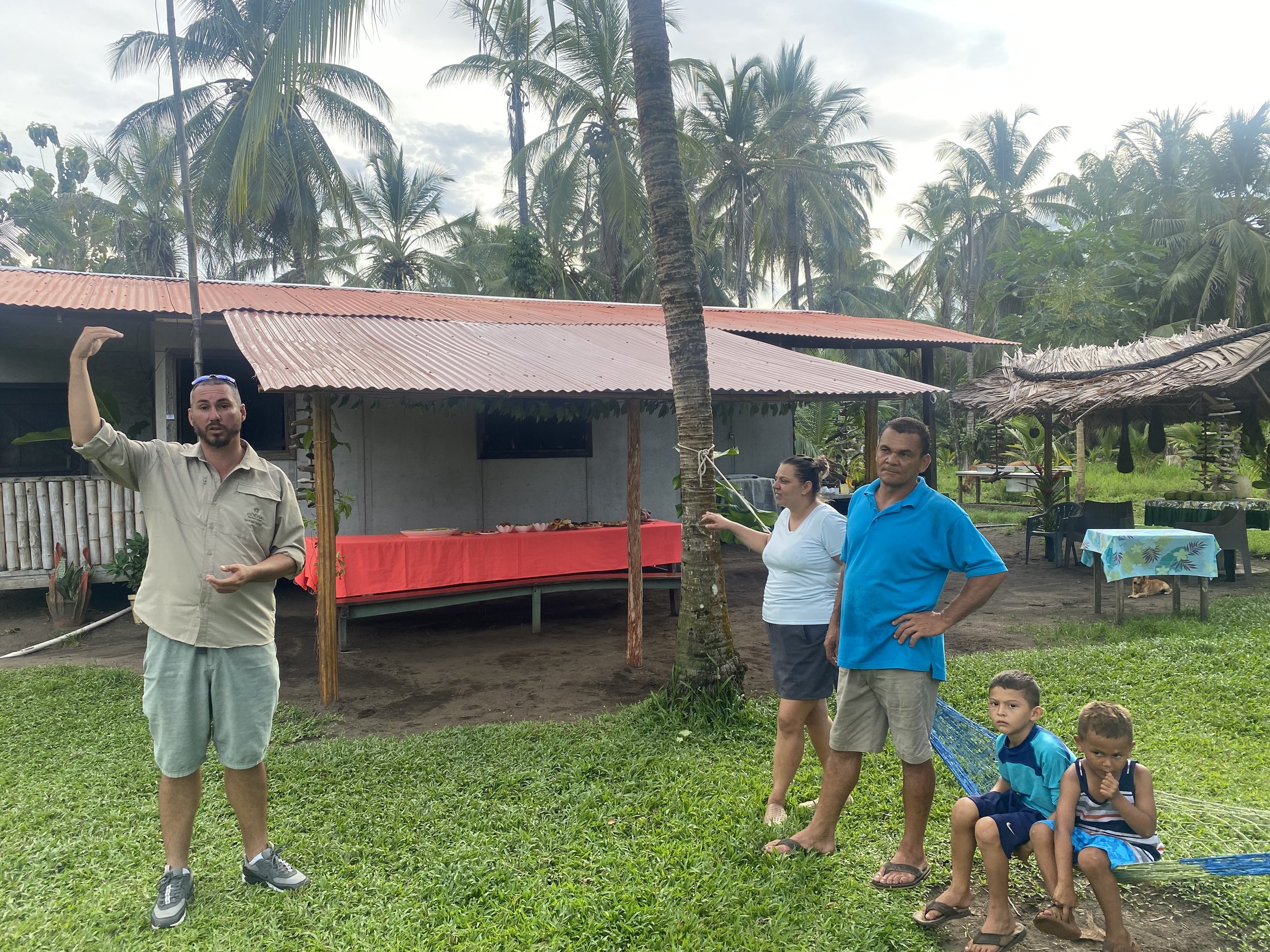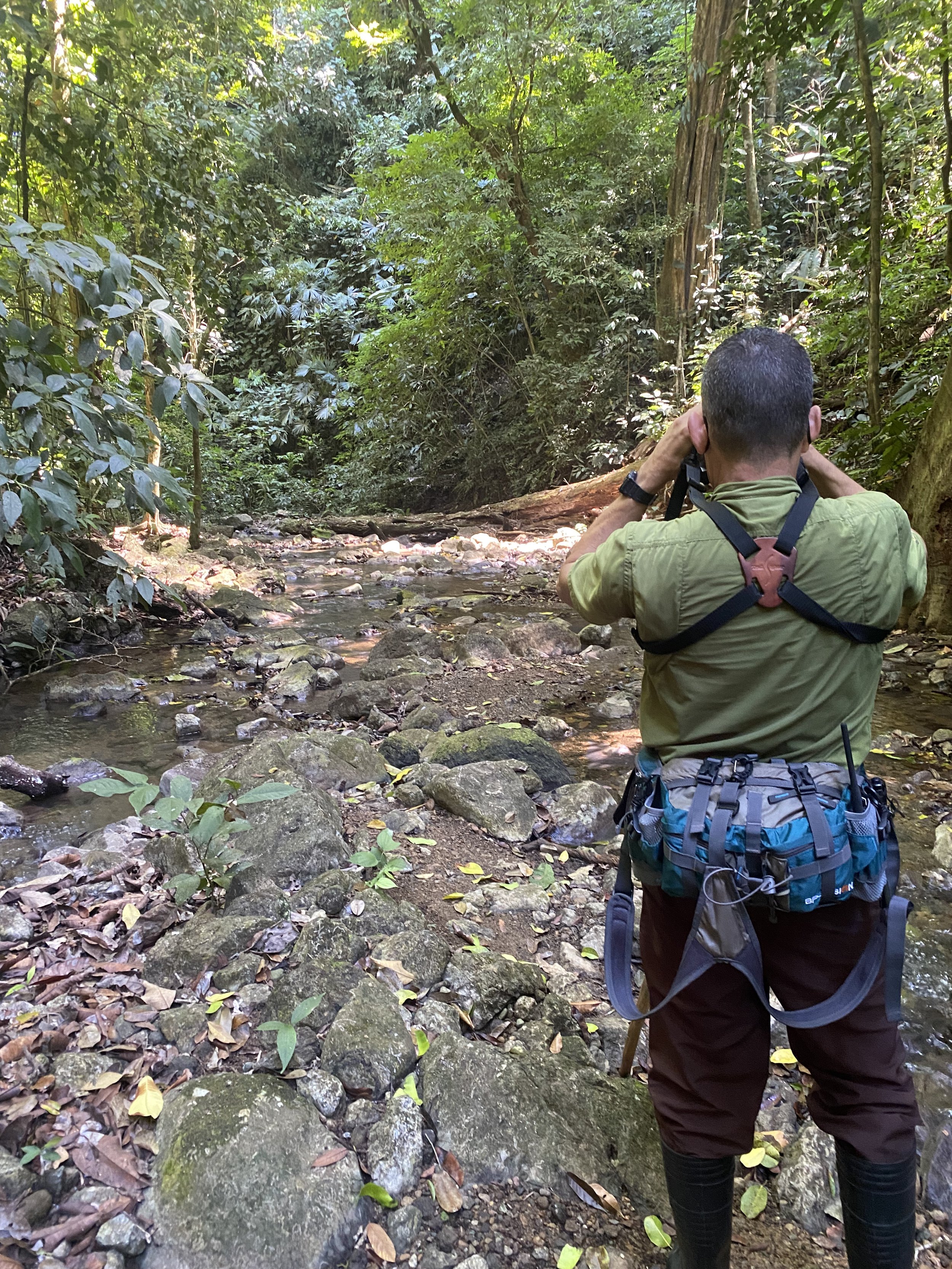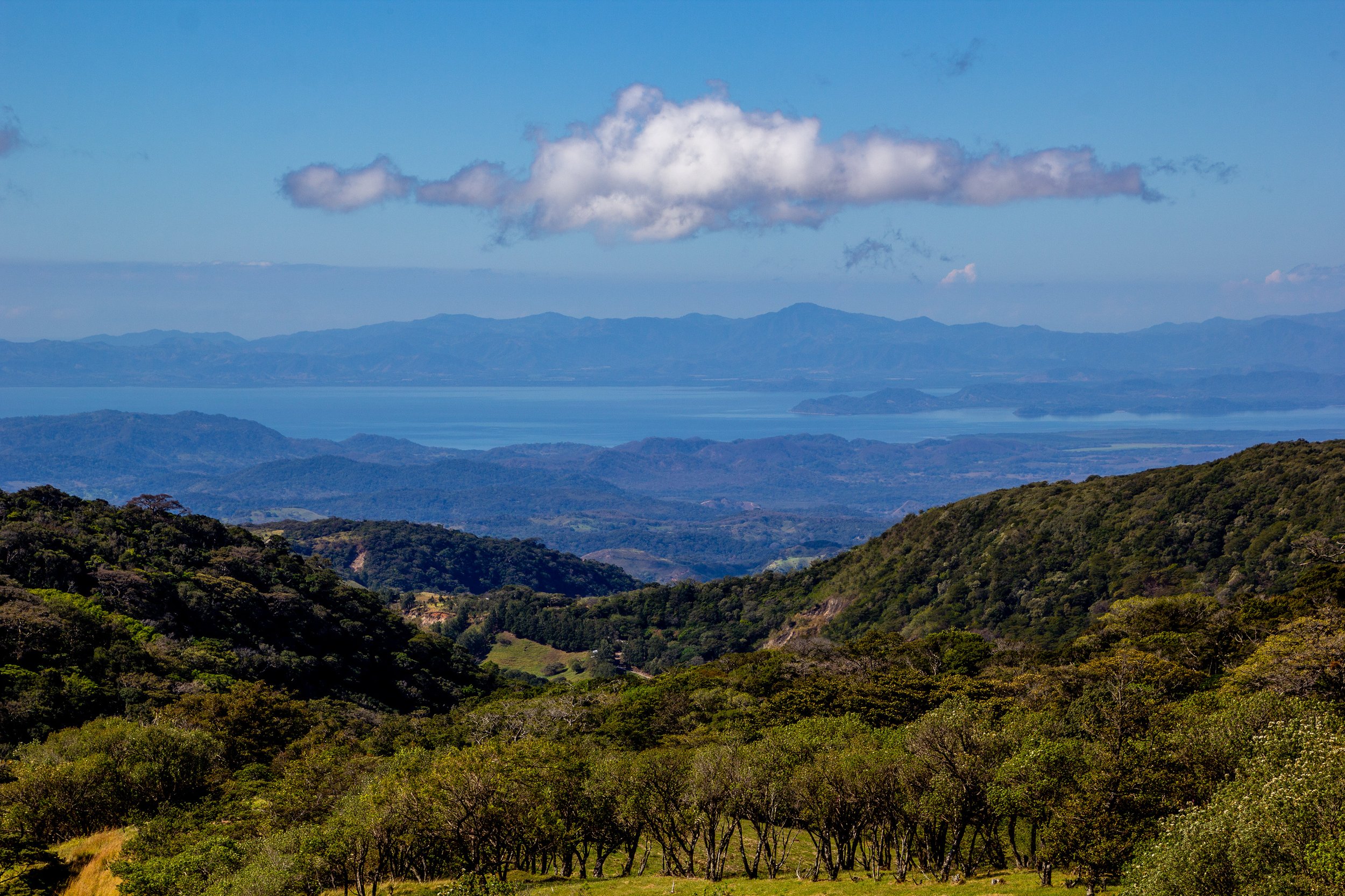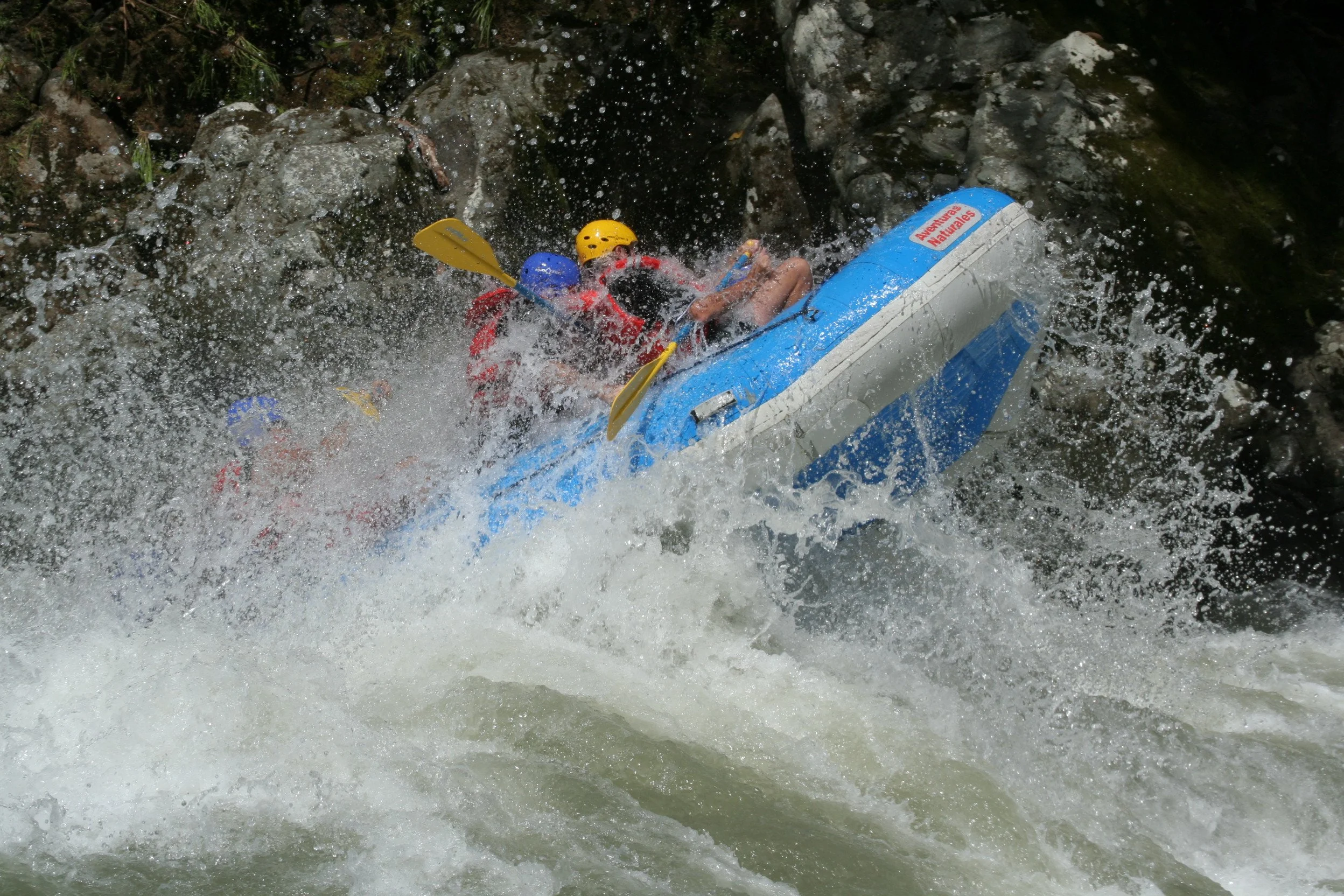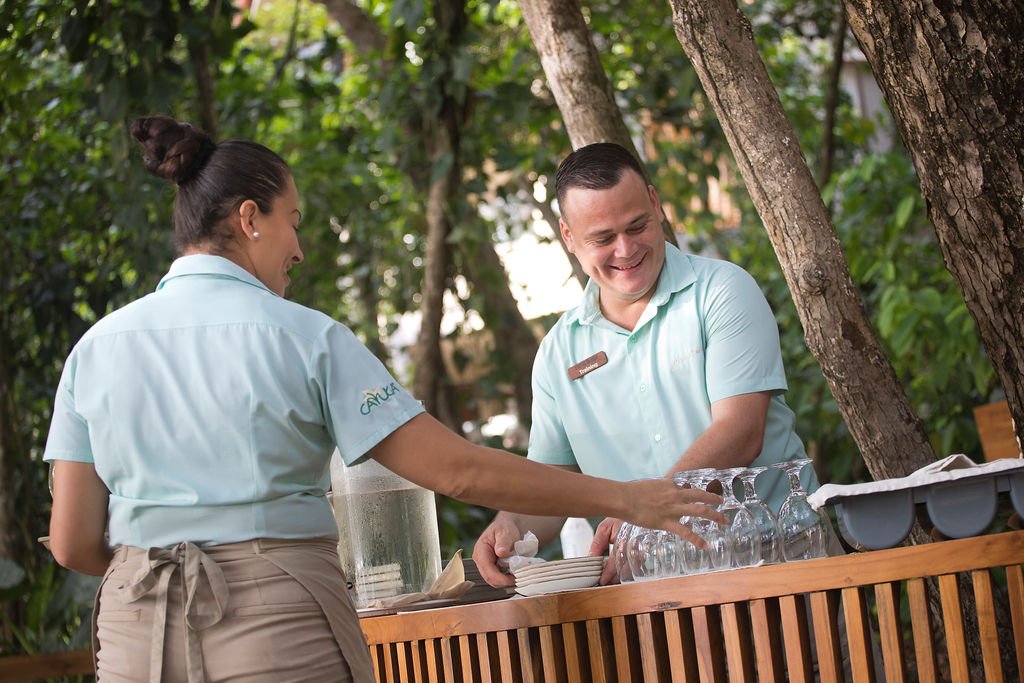Talks with Turney: Is Costa Rica a Year Round Destination?
Costa Rica, the land of “Pura Vida” meaning pure life and all that encompasses it. To me, that saying means enjoying what Costa Rica has to offer from surfing, hiking to waterfalls, dancing to reggaeton at a beach bar with an Imperial in-hand, or adventuring among sloths and monkeys at a National Park. It seems as though a big rumor has spread that Costa Rica is only a 6-month destination to visit. Therefore, I took a deep dive into learning about different things to do throughout the calendar year in various destinations of CR.
Costa Rica Enjoyable All Year
For the past year and a half, I have been traveling to CR regularly. Throughout that time, I’ve been fortunate to make friends with many locals from the hotels that we work with. They have welcomed me into their country and helped me uncover the best-known experiences that we can offer to all of you.
After speaking with several of these local experts, I was quickly reminded that the answer is absolutely yes. Costa Rica is a fantastic country to visit year-round. With 12 different climatic zones scattered throughout the country, there are windows of months where some regions are better than others. That is why it’s important to plan a Costa Rica journey with an expert.
You’ll see in the following text that from December – April Costa Rica is known as the “Dry Season” where the entire country is mostly sunny and dry. May – November is known as “Green Season.”
When I learned that it is possible to watch sea turtles nesting in Tortuguero National Park, or scuba dive/snorkel in sunny Puerto Viejo at Aguas Claras, both during the month of September – I was quite surprised. Meanwhile, at the same time of year, it is likely to be raining on the Pacific! I remember seeing online that parts of Jaco were flooding, meanwhile people at Aguas Claras were sending me pictures of sunshine and calm Caribbean waters.
So in this case, you truly need to know before you go.
Sample Itineraries
Before I reveal all of these hidden gems, I’ve created 2 sample itineraries — one of them highlighting the Caribbean side of Costa Rica and the other focusing on the Pacific. Remember, both of these itineraries are great choices for the Dry Season, but they are slightly different for Green Season.
*Feel free to save and share this itinerary with your clients, you can replace the logo and contact details with your own in the header and footer. You can have this itinerary quoted by your DMC or Tour Operator of choice, or work with the properties direct. If you need help with this document or how to book, please email me.
Weather in Costa Rica (Pacific Vs. Caribbean)
In Costa Rica, weather conditions around the country during Dry Season tends to be mostly the same. Sunny and dry. However, did you know that climate varies quite significantly between the west (Pacific) side of CR compared to the east (Caribbean) during Green Season? There are some major differences that I will help clear up. Use the table below to serve as a guide for navigating through each month.
Costa Rica Dry Season (December – May)
PROS
Sunniest and driest time of year
Epic sunsets
Great surfing early in the dry season
Livelier scene, everyone is out and about
Less intense white-water rafting
Great for snorkeling and swimming on the Pacific
Still an abundance of wildlife at most National Parks besides Guanacaste & Nicoya Peninsula
CONS
More crowds and tourists
Pricier accommodations
Limited availability; better to book in advance
Pricier; less available flight options
More traffic on the roads
Longer customs lines at SJO
Dusty and dry
December – JanuarySunny & still a bit humid from Green Season
Still an abundance of wildlife
Good time for surfing beginner to advanced waves on Pacific & Caribbean
February – April
Sunny and dry; least amount of rainfall throughout the country
Less wildlife and flora & fauna in certain areas
Smaller waves for surfing
May
The month of May is technically the start of rainy season, this time of year is typically coined “shoulder season” where it is transitioning from months of dry weather to more rainfall. This is a great time of year to visit because you have the opportunity to get the best of both seasons.
Costa Rica Green Season (June – November)
PROS
Less tourists
Better rates at hotels and villas (more deals, too)
Less lines for customs at SJO
More flight availability
Best time of year to catch bigger waves
An abundance of wildlife on land and sea
Flora and fauna blooming
Rain cools things off
CONS
Need a rain coat!
Some regions get more rain than others during certain months
Takes more knowledge and expertise to plan an itinerary
Still hot and humid when not raining
June – August
Great time to visit the Pacific — “Sunny mornings and rainy evenings” is the motto
Abundance of wildlife on land and sea
Biggest waves for surfing
Whitewater rafting is more intense
High season rates apply from July 1st – Aug 15th most places (summer vacation)
*The Caribbean side of Costa Rica — Tortuga Lodge, Pacuare Lodge, and Hotel Aguas Claras typically receive more rainfall during these months than the Pacific.
September – October
This time of year is the best hidden secret in Costa Rica. The country remains in Rainy Season, but the Caribbean receives a mysterious break from heavy rainfall during this window.
At Aguas Claras in Puerto Viejo, high season rates actually apply from Sep 21 – Dec 21; different from the rest of the country
Small waves, calm ocean
Best time to watch sea turtles nest and hatch in Tortuguero National Park
Excellent conditions for whitewater rafting to Pacuare Lodge
November
Similar to May, this is a great time of year to visit because it is the shoulder season, transition from Green to Dry. Again, opportunity to get best of both worlds.
Why You Should Visit Costa Rica During Wildlife Season
Recently, the Cayuga Collection Executive Marketing team decided to create their own catchy phrase for “Rainy Season” to what they now call “Wildlife Season.” I was curious of what exactly that meant, so I reached out to Hans to see what his interpretation was.
“The idea sparked after I talked to Mauricio, one of the guides at Arenas del Mar. I asked him the best time of year to see wildlife and he told me ‘The best time is when the rain stops. This is because all of the animals come out of their shelter to go looking for food and they become active.’ So, what happens in the wildlife season is that you have rain, but of course it doesn’t rain all the time. It just rains for a few hours and often it rains at night. Therefore, especially in the morning, the forest is just bustling with wildlife. At the same time there are turtles hatching, whales migrating, animals with their babies and much more. It is really a magical moment, not to talk about just the wildlife animals, but the flora and fauna how everything is coming back to life.
- Hans Pfister, Co-Founder of Cayuga Collection
Of course, there are many advantages to visiting Costa Rica in the dry season. In my opinion, seeing otherworldly sunsets during that time is worth the extra money, especially while many parts of the United States, Europe, and Canada are absolutely freezing cold/snowing. That alone can be a major factor on deciding on when to visit CR. Can’t blame people for wanting to escape the cold, especially when paradise is waiting for you.
However, for nature lovers and those looking to travel at a more tranquil pace with less crowds, the Green Season is perfect. The best part is that you have the opportunity to spend less, but experience something different. Local guides and hotel staff aren’t as busy during this time.
Wildlife season on the Pacific coast of Costa Rica.
Guests at Arenas del Mar enjoying a tour of Manuel Antonio National with one of ADM’s local expert guides.
Advice from the Locals –
“Visit Costa Rica During Green Season”
In this section, hear from the experts on the ground as they provide their take on why visiting Costa Rica during the Green Season is actually a great idea.
Tortuga Lodge —
Tortuguero National Park; northwest Caribbean
Juan introducing our group to the local family at Laguna 4. Shortly after, we feasted on local favorite foods, played soccer with the kids, and drank fresh coconut water!
Juan Molina Guadamuz is a certified naturalist guide at Tortuga Lodge who moved from Limon to Tortuguero at the young age of 2 and has been there ever since. The first time I met Juan was last June when I led a FAM Trip to Tortuga Lodge with a group of travel advisors. Juan led many of our tours and even took us kayaking through the less-traveled canals of Tortuguero National Park where we ended at a village. He introduced us to a family that lived on “Laguna 4” and they served us some local traditional favorite foods. It was a day to remember, and the entire group (myself included) was moved by how much tradition and culture is to be found in this Amazonia-like nook of Costa Rica.
Juan told us that he worked at Tortuga Lodge prior to when it was purchased by Böëna Wilderness Lodges. When Roberto and Luz created Böëna Wilderness Lodges and purchased Tortuga Lodge, they reached out to him because they wanted to make sure that the naturalist guides and staff members were local people from Tortuguero in order to maintain the authenticity of the experience. Meanwhile updating the accommodations to a Virtuoso-caliber level. A job well done!
So, I got in touch with Juan and asked him when his favorite time in Tortuguero National Park is, and what different months of the year bring to the destination? This is what he had to say:
“Look, I'm going to be very honest. For me, the most beautiful time to enjoy Tortuguero, a very diverse area… an area where there is a great variety of flora and fauna, the most diverse area in the country, right, but one of my favorites is from mid-September to mid-October. This is when there is less precipitation in the rainy season, it is also the time of the green turtle season. A time when you can see hatching of baby turtles, and possibly the mother’s laying eggs as well. Since this time is still the rainy season when the forest blooms the most, it’s very active time of year for bird migration and to see other species.
However, at Tortuga Lodge any time of the year you have possibilities of seeing animals. For example, from December to April there are possibilities of seeing three species of monkeys and two species of sloths. At the end of March through April is a nice time to see dolphins or even manatees. 50% of the birds in Costa Rica can be seen at Tortuguero National Park throughout the year. Other species include iguanas, many frogs, anteaters, sometimes jaguars and panthers. Great place year round”
- Juan Molina Guadamuz, Expert Naturalist Guide at Tortuga Lodge
Kayaking the canals of Tortuguero National Park in June 2022.
Pacuare Lodge — Turrialba; Central Caribbean
I took a moment to speak with Natalia Fernandez from Turrialba. Natalia is the Director of Sales and her father is Roberto Fernandez, the owner of Pacuare Lodge. Therefore, she has essentially been visiting the lodge every year for her entire life. Since Pacuare is located in the central region of Costa Rica, but more towards the Caribbean, I was curious if the rainy season weather pattern was more similar to the Caribbean or Pacific conditions? This is what she had to say:
“We are influenced by the Caribbean weather, so September and October are great months to travel to Pacuare. It is very likely visitors will have sunny days, the color of the river is amazing, so it’s a great time! And the best prices!”
- Natalia Fernandez, Director of Sales for Böëna Wilderness Lodges
What Natalia means by “the color of the river” is that when there is a lot of rainfall in the nearby mountains, the river appears murky because of all the rain runoff going through the river, making its way to empty out to the Caribbean. Since rain holds off for a bit in September and October, the rafting conditions are favorable.
*Please keep in mind, that in order to whitewater raft into Pacuare Lodge, children must be age 9 or up. To whitewater raft out of Pacuare Lodge, children have to be 12 +
Rafting Conditions at Pacuare Lodge by Month:
December – January: Best conditions for rafting; sunny, emerald green water. River is still running quickly from Green Season rains, still lots of wildlife
February – April: Sunny conditions, emerald green water, river is running more slowly. Best time for beginners
May: Due to shoulder season, this month can be a lot of fun. Expect sunny mornings and rainy evenings, the river will begin to run faster and get murkier later in the month.
June – August: This is the time period that receives the most rainfall at Pacuare Lodge. During these months, you risk not being able to paddle out of Pacuare Lodge. If the river is flowing too fast and the water is too high, they will cancel the rafting (typically only happens about 5 times per year). However, that doesn’t mean you’re stuck, you just have to take a land transfer out rather than rafting.
September – October: Hidden secret of Costa Rica! You get low season rates, but the Caribbean receives a brief break from rain during this time. Expect great river flow, emerald green water, and sunshine while the Pacific side of CR receives the most rainfall.
November: Same with May, shoulder season conditions. Later in November you’re more likely to get less rain and slower river flow.
Quick video I made of the activities included with your stay at Pacuare Lodge.
Lapa Rios — Osa Peninsula; southwest Pacific
Visiting Lapa Rios is like taking a leap into “the Jungle Book” where you will feel like Mowgli living amongst beautiful wild animals. At the moment you arrive at the Puerto Jimenez airport, it’s possible to see macaws feeding on an almond tree over the airport office of Lapa Rios. From there, a driver takes you through the Osa wilderness until arriving at Lapa Rios in Matapalo.
Something that is so astounding about Lapa Rios is that it located near primary forests, meaning that it has been untouched for centuries, so it is possible to see trees that are over 500 years old! It is also located on Golfo Dolce, one of the only Tropical Fjord’s in the America’s. Combine these two factors and you get a literal wildlife viewing wonderland. So, it is important to understand that you will be able to see plenty of wildlife year-round at Lapa Rios, but when is the best time of year to see certain animals and get the best weather conditions? We spoke to Osa-native Frank Barquero, who is also a certified volunteer Park Ranger, to learn more about when the best time to visit is.
“As a naturalist guide and a native of the Osa Peninsula, I can affirm that there are two times of the year that are my favorites. The first is the months of May to August. It is a time of transition, from the dry season to the rainy season. The first rains can occur between April and May, then it continues to rain intermittently. Even for the last decade August has been a month with relatively little rain. May is usually the last month we get to see North American migratory birds. It is incredible to see the males wearing their best clothes, with their colorful plumage, ready for the mating that will take place in the north of our continent. The forests turn a deeper and more intense green color due to the effect of the rains, and new plants and trees are born and grow at the beginning of the rainy season. Also, at the end of July and during August is when we can see humpback whales in the Golfo Dulce. This is not to mention the dolphins that usually inhabit this beautiful fjord. The months of September, October and part of November are almost always very rainy. It is very difficult to spot wildlife because it rains too much.
And the second season, my favorite, usually starts at the end of November and beginning of December. Since September and October we have, once again, the presence of migratory birds from North America. To this we add that the heavy rains begin to diminish and the days begin to become warmer and sunnier. Even January and February can be added to this second favorite season. Nature tourism is increasing admirably, and it is an incredible time for bird watching and wildlife in general.”
- Frank Chaves Barquero, Expert Local Naturalist Guide at Lapa Rios
One of the many wonderful photos that Frank shares with our team while he is leading tours at Lapa Rios! A smiling 3-toed sloth taking a nap in a tree.
The Osa Peninsula also provides critical nesting habitat for four species of sea turtles - olive ridleys, green turtles, hawskbills and leatherbacks. Visiting during nesting season gives guests a good chance to witness a hatching or participate in sea turtle research and protection with Osa Conservation, a partner of Lapa Rios.
Olive Ridleys - Nest from June-December
Green Turtles - Nest from July-October
Hawksbills - Nest from July-October
Leatherbacks - Nest from March-September
Aguas Claras — Puerto Viejo, southwestern Caribbean
Puerto Viejo is an interesting Caribbean town for many reasons. In a sense, it operates by its own rules in terms of weather. In September and October while almost every Caribbean Island and beach town are threatened by hurricanes (and now seaweed), Puerto Viejo enjoys its most sunny and calm time of year.
Therefore, I took a moment to speak with Marvin Solorzano, a naturalist guide at Aguas Claras, about his favorite time of year in Puerto Viejo and what makes snorkeling during this time so special:
“For me, I think September or October because I love to enjoy snorkeling buddy. For that reason, I prefer those months. During this time, the sea is so flat which makes it perfect for snorkeling or scuba diving. It is like Summer here, and that is what makes it so special. Cahuita National Park is the best place to snorkel because it is the most protected and has the most reefs. You can also try behind Aguas Claras, Punta Uva beach maybe, but Cahuita National Park is definitely the best.”
- Marvin Solorzano, Expert Local Guide at Hotel Aguas Claras
Last June’s FAM Trip to the Caribbean side of Costa Rica. This is after snorkeling at Cahuita National Park with Marvin, our guide at Aguas Claras. Exploring Puerto Viejo the Cayuga way!
“We do recommend people to visit Monteverde during Green Season because during these months is when you can see the real Monteverde, the most authentic, misty and rainy days of the year. During this time the town is less crowded, which allows visitors to see more wildlife on the reserves. The overall views are much nicer as everything is greener.”
Overlooking the Nicoya Peninsula from Monteverde.
If you do happen to visit Senda Monteverde during the Dry Season, make sure you go E-Biking to Cerro Pinoccho, it is also an option to hike or horseback ride here. It is the best sunset in Monteverde! See so in the video below. Also, a pro-tip is to bring a rain jacket and sweater any time you visit Monteverde; it can get quite cold at night!
Arenas del Mar —
Manuel Antonio, Central Pacific Coast
If you’re looking for a true “Costa Rica 101” experience where you get a little bit of everything that the green country has to offer, then Arenas del Mar is the answer. There are so many activities to choose from while staying at ADM in Manuel Antonio, it can be difficult to decide which ones. Therefore, I spoke with Elaine Solano, the Experience and Sustainability Manager at Arenas del Mar to see if there are certain activities that are better to do in the Green Season.
Are there any experiences that you can do at Arenas del Mar during the Green Season that you are unable to do in the Dry Season?
There are 2 key tours that you must do during a specific time (covering green season):
Naranjo river rafting class III. Open from May to November
Whale watching tour: Open from July to October
What is the best time of year to visit Manuel Antonio National Park?
All seasons are good, however we suggest avoiding going during festive dates that are usually very crowded, such as Easter and Christmas.
During these dates we recommend going during the afternoon, and during green season dates, is better to visit it in the morning.
When is the best time of year to surf at Arenas del Mar?
From May to November more less
No matter what time of year you visit Arenas del Mar or any of the Costa Rica properties in our portfolio, expected to. be greeted with a welcome smile! The staff members are truly what make the difference.
There simply is no bad time to visit Kurá, but if you’re looking for a honeymoon or romantic getaway with your loved ones, I would suggest to go during the Dry Season to guarantee an amazing sunset from the deck of your room or from the main lobby.
However, if you’re more adventurous, then Green Season is a great time to visit Kura because of the experiences that you can do. During the months from June – August is the best time to visit Nauyaca Waterfall when the falls are moving with sheer force from all of the rain. Meanwhile, this is the time when humpback whales migrate through Marino Ballena National Park. Sometimes you can see the whales from Kurá with binoculars, but my insider tip is to book a boat ride for the day to Caño Island. In August, I’ve seen humpbacks with their babies!
PASHA — Santa Teresa, Nicoya Peninsula, Pacific Coast
Pasha, the only standalone private-buyout villa in our portfolio, has many benefits of visiting during the Green Season. Clark and I were lucky enough to be some of the first guests to stay there towards the end of January 2022 during Dry Season. We quickly realized how fortunate we were to be visiting during that time of year. Sunshine all day, great waves to surf, direct views of the ocean from Pasha’s porch, unreal sunsets, and best of all it was not too dry yet.
View of the pool and ocean from Pasha
All that being said, it can be tough to inspire yourself to leave paradise at Pasha and explore the surrounding area. This 10-bedroom villa is located in Playa Hermosa, which is about 5 miles north of Santa Teresa town. Being away from the town is a total advantage because there isn’t as much noise or traffic. On the beach you will see surfers with their dogs, some photographers, or families hanging out. With all of this at your fingertips, it is hard to imagine why someone would want to leave, but the Nicoya Peninsula is teeming with wildlife to explore. I wanted to see what was outside of Pasha and Santa Teresa, so I went on a tour with Douglas Morales, Owner of Manakin Tours who helps manage excursions and activities for our guests at Pasha. Here is what he taught me:
“The Nicoya Peninsula is unique because we are in a transitional forest. Meaning we are located right in between the driest forest in Costa Rica which is the Guanacaste province, and the wettest area in the rain forest around Manuel Antonio region. 60% of the forest here is deciduous, which means they will usually lose their leaves when the rain stops in December. The leaves fall and cover all the ground to avoid evaporation and preserve more water underground near the roots. This is also when they will start blooming temporarily because birds migrate from North America to escape winter time and help pollinate the area. The other 40% of the trees are green and never lose their foliage. In May, when Green Season arrives, the deciduous trees grow their leaves again and you can see more wildlife.
This region is also awarded as one of our planet’s Blue Zones. Some of the reasons being that our diet is very helpful and our low-stress farming lifestyle. The good relationships among families and friends within the community help to increase the age of people. Exercise, good diet, and good relationships are things that we take pride of and the region that we live in allows for us to live this lifestyle. For that reason we need to protect this region and ecotourism is a big help.”
— Douglas Morales, Owner of Manakin Tours
If there is no availability for Pasha during festive or you aren’t interested in paying high season rates, you should definitely consider staying at Pasha from May – September during Green Season. During this time, the town of Santa Teresa is not as busy with tourism, meaning the road is far less dusty. Expect to wear a bandana and sunglasses in March or April while going through town.
Also, our rates are much better in Green Season and wildlife is teeming! This is the best time to visit Montezuma waterfalls or any of the nearby National Parks. Another perk is the sea life – on a boat tour in one day you can see Humpback whales, schools of dolphins, sea turtles, bioluminescent waters, birds, and more! Check out this video of dolphins swimming in front of our boat during the month of September, this is right off the coast of Montezuma, about a 45-minute drive from Pasha.
Come to Costa Rica, but make sure to use this as your guide for the best time to visit each destination.
Pura Vida!!






